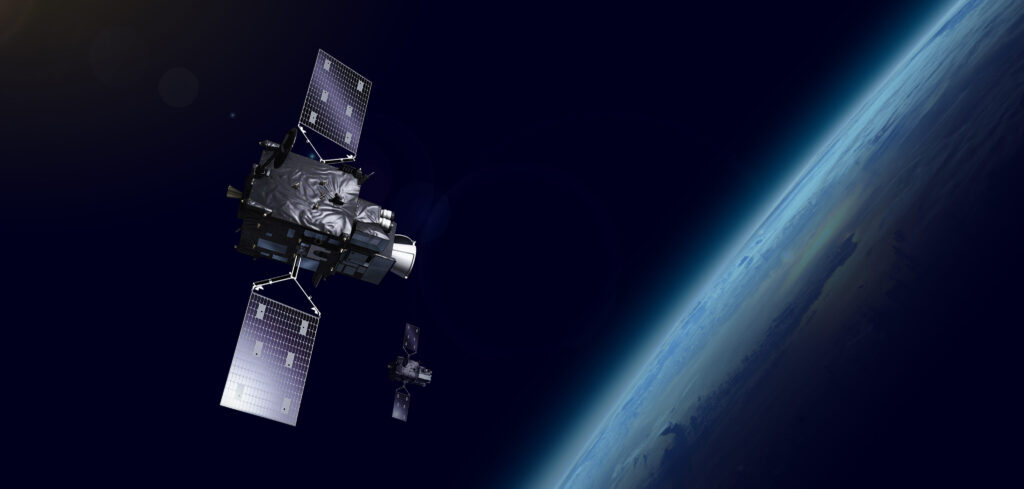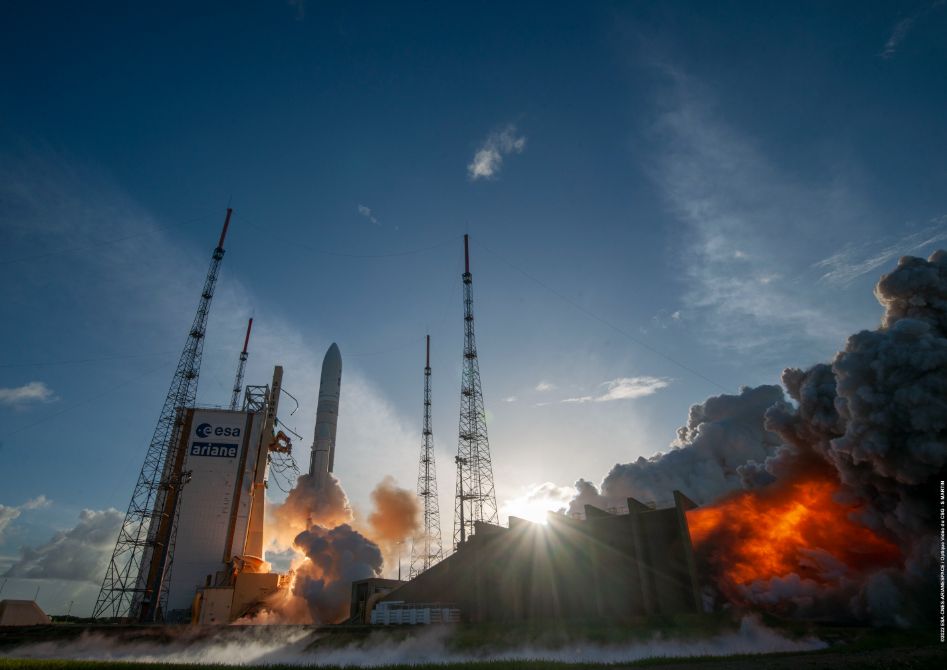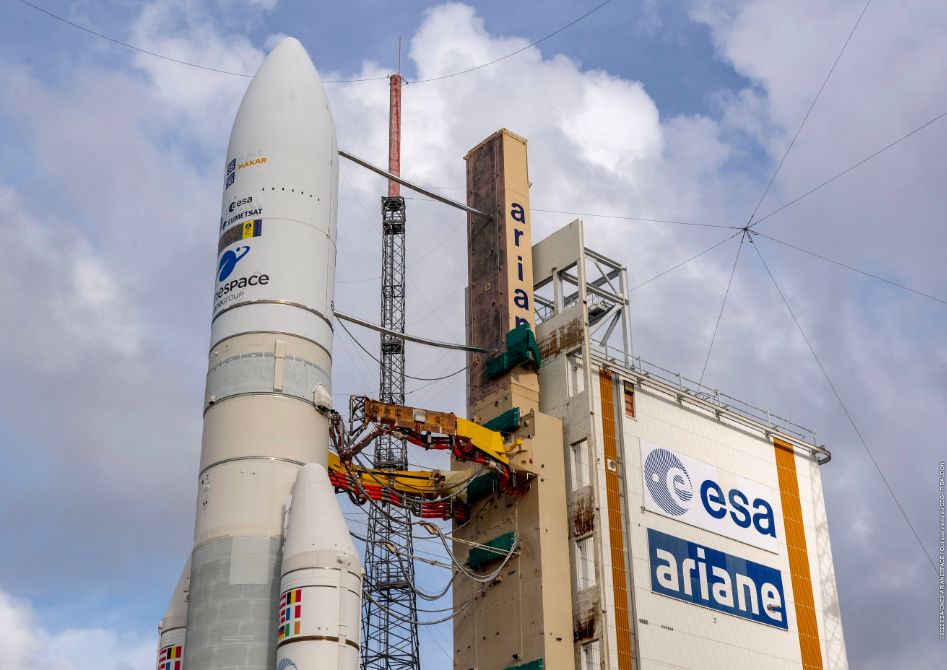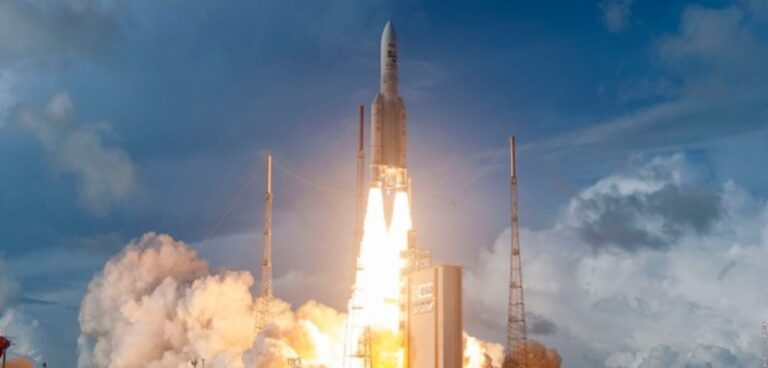The first of EUMETSAT’s next generation of meteorological satellites is currently being guided to its geostationary orbit above the equator following its successful launch from the European Space Centre in Kourou, French Guiana.
Meteosat Third Generation-Imager 1 (MTG-I1) heralds the start of a new era for weather forecasting in Europe, said Phil Evans, EUMETSAT director-general.
MTG-I1 is the first of a new generation of meteorological satellites carrying more advanced and precise instruments for monitoring and forecasting severe weather events such as storms, lightning, fog and wildfires.
It was successfully launched on an Ariane-5 rocket at 21:30 CET and is on its way to its correct orbit, 36,000km above the equator.
“MTG-I1 will generate images of Europe and Africa every 10 minutes, faster than has been possible up until now, and in higher resolution, more precise detail,” Evans said. “This data will help meteorologists meet one of their main challenges – timely and accurate forecasts of rapidly developing severe weather events – so that citizens, first responders and civil authorities can take appropriate action.
“The satellite’s lightning imager will continuously map lightning flashes between clouds and from clouds to the ground, which is a first for Europe with significant community and aviation industry safety benefits.”

MTG-I1 will undergo a 12-month commissioning phase, in which its instruments will be calibrated and the data they produce validated, before becoming operational. It will be operated from EUMETSAT’s headquarters in Darmstadt, Germany.
“Meteosat Third Generation is a European success story,” Evans said. “No European nation could afford to develop and operate such a system on its own. By combining the resources of our 30 member states, including their scientific and technical expertise, we are able to bring about a new era in weather and climate monitoring.”
The full Meteosat Third Generation constellation will comprise two imaging satellites and, for the first time, a sounding satellite. MTG – Sounder 1, is expected to be launched in 2024.
MTG-I1 was built by Thales Alenia Space (TAS) under contract by the European Space Agency (ESA, which is responsible for procuring the satellites from industry fulfilling EUMETSAT’s requirements.

Paul Blythe, ESA’s Meteosat program manager, commented, “After over a decade of close cooperation and hard work of all involved, to see the first of the MTG-I satellites take to the skies is a profound experience for me. Thanks to all who have made this possible including our friends in the industrial teams throughout Europe ably led by TAS France, my ESA team who have supported me throughout, many of whom have been with me since the start of this adventure, and EUMETSAT our partners and ultimately owners of the MTG satellites.”
Simonetta Cheli, ESA’s director of Earth observation programs, said, “I’m extremely proud to see a new era of satellite meteorology begin. I would like to personally thank the teams involved who have dedicated their time, talent and tenacity to make this a success. We would not be here without you.

“MTG was developed thanks to the expertise of ESA, EUMETSAT and a highly competitive European space industry. With the satellite’s innovative design and its novel ‘lightning catcher’, MTG will push European weather forecasting into the future. I am very much looking forward to the next decades of working with our European partners, especially the ESA member states participating in the MTG program whose contribution will ensure Europe remains a world leader in satellite meteorology, as well as EUMETSAT, and all our partners involved. Our cooperation demonstrates the truly global spirit of Earth observation.”
Simon Keogh, Met Office head of space applications and nowcasting R&D, said, “We’re hugely excited about the benefits that the MTG-I1 satellite will bring to our forecast accuracy, which will continue to evolve as the subsequent MTG satellite launches take place in the coming years.
“A dedicated lightning imager over Europe and Africa will vastly improve our short-range forecasting, helping us to identify and track impactful storms, particularly rapidly developing, multi-hazard storms that can bring not only lightning but also strong winds, hail and heavy rainfall. The improved frequency and resolution of imagery will allow our meteorologists access to the best possible information on the current state of the atmosphere, which is crucial in creating accurate weather forecasts. More frequent and detailed imagery will also improve our meteorologists’ confidence around issuing short-range severe weather warnings.
“We’re excited to keep working with EUMETSAT and ESA as the MTG mission continues in the coming years with further satellite launches.”

Thales Alenia Space Cannes is the prime industrial partner for the development of the MTG-I satellites. TAS works in close cooperation with: OHB-Bremen, which assembled, integrated and tested the platform; Leonardo in Italy, which provided the lightning imager instrument; TAS Italy, which delivered the data collection and GEO SAR instruments; and TAS Cannes, also integrated the flexible combined imager.



